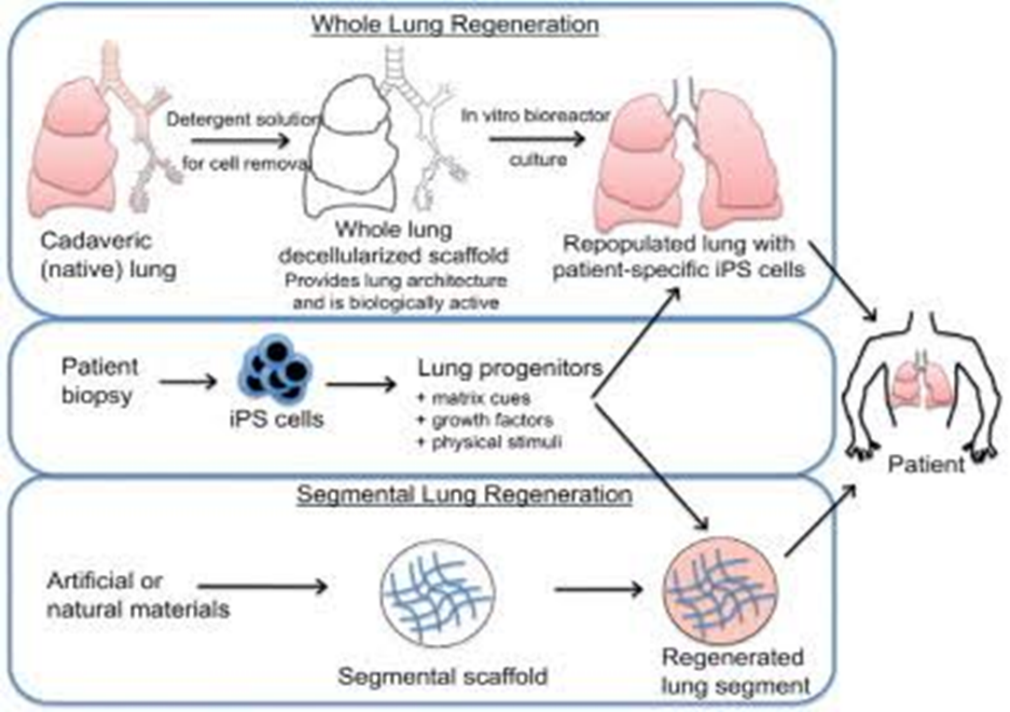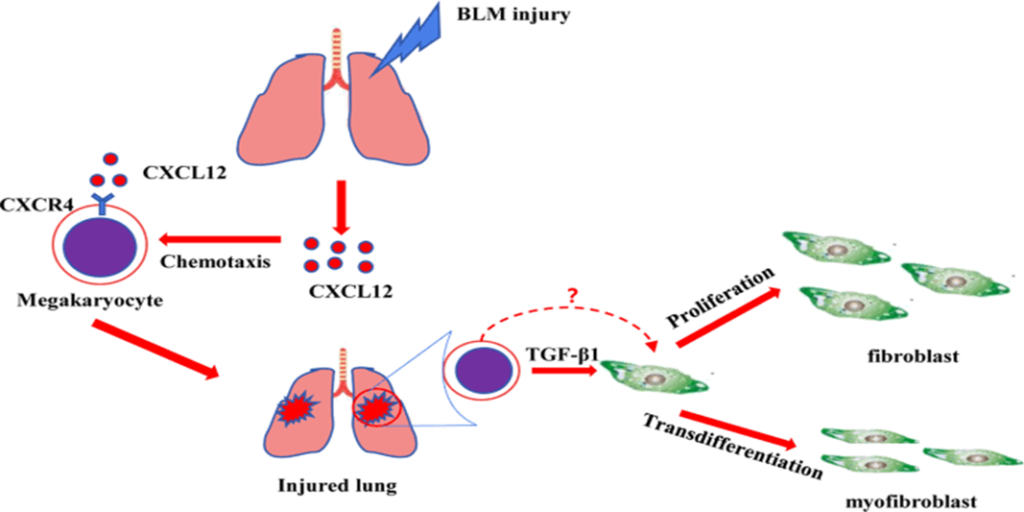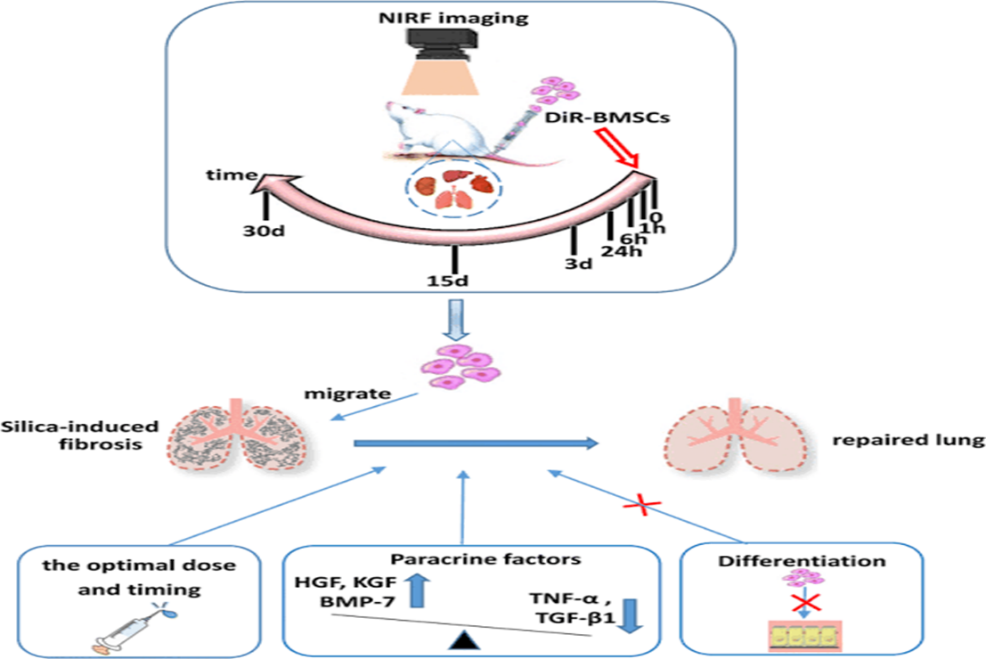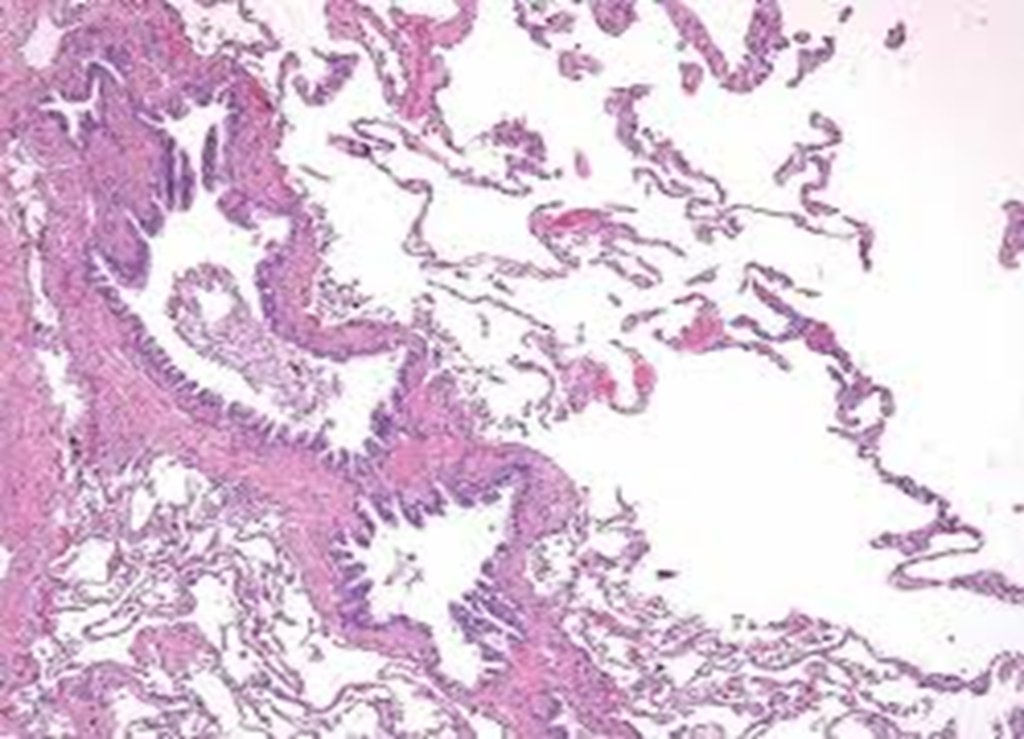Prithiv Kumar KR1*
1Director, Principle Scientist- Poichyadical Stem Cell Centre for Research and Development (POSCERD), Chicago, USA and CEO, La’zer Group of Companies, Chicago, USA
*Corresponding Author: Prithiv Kumar KR,
1Director, Principle Scientist- Poichyadical Stem Cell Centre for Research and Development (POSCERD), Chicago, USA and CEO, La’zer Group of Companies, Chicago, USA; Email: [email protected]
Published Date: 23-09-2021
Copyright© 2021 by Kumar PKR, et al. All rights reserved. This is an open access article distributed under the terms of the Creative Commons Attribution License, which permits unrestricted use, distribution, and reproduction in any medium, provided the original author and source are credited.
Abstract
Lung disease is the most effected organ in patients. Corona (CoV) targets the lungs and causes death of millions of patients across the globe. There has been increasing burden in lung associated disease due to the pandemic. CoV is a deadly pandemic that cause respiratory problems and affects trachea of lungs. CoV which enters the respiratory system, where enzyme is present, and destroy the respiratory organ, causing patients to face difficulty in breathing.
There are two steps basically for virus to infect lungs. First pathogenesis converting enzyme to its protein, second cellular protease letting virus through respiratory system. The spike activates into membrane and releases the virus RNA. The present target for the virus is to infect the lungs, while T and B lymphocytes is always negative in ACE2. So proposed solution is stem cell treatment. The release of cytokines S1, S2 and RBD results in edena dysfunction of acute respiratory collapse and cardiac arrest.
Keywords
Lungs; Regenerative Therapies; Inflammation; Bone Marrow; Stem Cells
Introduction
Appalled by increasing number of cases in lung diseases, the scientific community is focussed on delineating the basic principles of lung development and growth [1]. There is a near understanding on building artificial lungs. The more knowledge in defining disease origin leads to continuous understanding of biomechanics properties and strong knowledge of lung development. By trying different models systems with progressing pathology techniques, the system generates conflicting and contradictory results [2]. To identify latest developments in lung epithelial biology, several steps need to be overviewed. First identify cells, stem cells or progenitor cells residing in lung tissues, second, plasticity of different cells owing to injury induced activation or repair models and third regenerative capacity of lungs. Several approaches had been developed for repair and regeneration of lungs [3]. Over the period of years extensive exploration of potential efficacy of progenitor cells to function of lungs has been in trial [4].
Approaches to Clinical Trial of Cell Therapies
Molecular changes occur during development and maturation include cellular and organ level degenerative changes. The hallmark of this process is an increased expression of cellular senescence markers, increased DNA damage, oxidative stress, and apoptosis [5]. The pathological illness in form of ageing causes chronic respiratory disease. Below Fig. 1 shows strategies for lung regeneration [6].

Figure 1: The whole lung scaffold decellularized and lung architecture is repopulated using iPSC cells. These cells are then injected into progenitors, scaffolds which in turn are segmented and regenerated. Ageing clearly indicates the development and incidence of chronic respiratory disease including cancer and idiopathic pulmonary disease.
Ageing of lungs can be identified from transgenic and spontaneity of muting in mouse models. Most of the work is focussed on failure of epithelial cell populations as a key component and also as a global phenomenon in lungs. This shows impact in endothelial residents, mesenchymal and immune cell populations. The solution is change in molecular pathways within multiple lung cell populations [7].
Chronic Obstructive Pulmonary Disease
The current availability of drugs focus on relieving the injured structures in respiratory disease. The progress made by regenerative therapies has been done by analysing pre-clinical and completed clinical trials. Below is the Fig. 2 showing COPD lungs [8].

Figure 2: There is a clear difference between healthy lungs and COPD. The healthy lungs have clear efferocytes, sterile airway clean phagocytes. COPD lungs show formation of bacterial colonisation which leads to defective phagocytes hence sterile airways gets contaminated. There is persistence of inflammation leading to apoptotic cells forming defective efferocytes. They cause chronic illness and effects lungs.
The approach for therapy is exogenous stem cells stimulating regeneration of endogenous lung stem/progenitor cells [9]. They repair the structure and improve the function of injured respiratory system of COPD. When this method applied on Cryo-Injured (CI) lungs on mice model, they tend to organise pulmonary structures that resembles human being and helps cure COPD patients [10]. The retinoic acids that are formed during the procedure help in regenerating and repairing the lungs. These retinoic cells activate the endogenous stem cell progenitor cells [11-14].
Bone Marrow Derived Stem Cells (BMSC)
Basically stem cells have an ability to self-renewal and differentiation, in this pulmonary repair they utilise the exogenous mesenchymal stem cells to attenuate lung injury [15]. These cells are activated in response to damage in tissue or site migration for functional repair. During this phase, the cells are non-immunogenic allowing them to engineer and expand. In acute injury, BMSC reduce pulmonary response of inflammation to cause down regulation of cytokines in numerous mechanisms thus reducing pathological damage. There are numerous occasions where exogenous bone marrow derived cells especially the cells that repair chronic lung disease and acute injury cells are used as gene has vector therapy [16].
Respiratory diseases such as lung fibrosis, pulmonary hypertension possess major challenge in the world. Lung transplantation has a low survival rate of less than 5 years. Earlier there were few details on amniotic fluid for re-cellularisation and possible use for proliferation and differentiation [17-20].
Below is Fig. 3 of lung disease cure [21].

Figure 3: The indication of the cells that are elongated pro-platelets derived from bone marrow and spleen are injected into lung vasculature [22]. This process helps in transforming HSCs into immature MK and benefit lung injury and initiates cure. Another figure will support the transformation of cells.
Below Fig. 4 for lung cure indicates process of bone marrow expansion and the cells injected migrate to injured lungs (Fig. 5) [27-29].

Figure 4: The transformation is a continuous process of bone marrow targeting injured lung cells. CXCR4 that forms the megakaryotes and injected into injured lungs. The cells injected act as a gene therapy beta vector cells to transdifferentiate into fibroblast and myofibrioblast. They are the proper version of cell therapy, initiating the injured site for repair and regenerate. The atmosphere in the lungs favours the cells to work and repair on site. To support this argument, another figure with timely injection of cells is shown below.

Figure 5: This shows the bone marrow stem cells are administered at intervals of optimal time and dose for a period of a month. The cells injected migrate to injured lungs. They are then differentiated to repair damaged areas. During differentiation important paracrine factors are taken into consideration. The paracrine factors include HGF, KGF and BMP-7. These factors show increase presence during final injection. As early days during differentiation TNF alpha and beta vectors sends lower signals. Although there were restricted cell lineage in initial stages, it is often proven BMSC has the capacity to differentiate cells to produce progeny of lineages.
There was one instance while experimenting with mice using immunohistochemistry and Y chromosome cell engraftment was demonstrated in donor male mice bone marrow stem cells engrafting. Another instance when female recipients of male HSCs showed engraftment of donor cells within lungs [30]. Further study also showed bone marrow stem cells was actively recruited by injured lungs for repair. By conducting series of experiments on bone marrow injection into recipient mice, cell protein with Green Fluorescent (GFP) or beta galactosidase or genetic Y chromosome are drastically measured. These are helpful inducing blomycin, liposaccride, paracetamol and radiation which produces single bone marrow cells to cure injured sites in lungs. Most notable factor in these studies is bone marrow which showed engraftment in stromal cell types [31].
The current status of this cell rafting is overestimation of techniques in detecting engraftment particularly with green fluorescent donor cells. The study also suggests low levels of engraftment of BMSCs.
Below Fig. 6 shows progress of injury after infusion of bone marrow [32].

Figure 6: The frequency of infusion among nodulus and nodulus cellularity is compared and measured. After infusion of BMC the injured area, the graph shows clear signs of cure. Even microscopic image above graph shows the same.
On the continuous experimental process below graph indicates the progress you can clearly see the alveolar thickening after the BMSC infusion.
To further support the experimental results, microscopic image examined, shows BMSC has the capacity to clean and repair the injured sites (Fig. 7).

Figure 7: There is a clear pathway of injury that is visible.
The below image of scope 1 (Fig. 8)
Above microscopic image specifies an acceleration of lung maturation using bone marrow cells.
See the clear difference from Fig. 8 and 9. Below Fig. 9 is of lung ageing, whereas Fig. 8 represents lungs after bone marrow infusion.

Figure 8: Above microscopic image specifies an acceleration of lung maturation using bone marrow cells.

Figure 9: Two scopes have tremendous advantages over maturation and cure.
Results and Conclusion
There are several possibilities of using stem cells as vectors to replace DNA. Within respiratory phase and whilst cystic fibrosis mode is on. These stem cells transduce epithelial airway path to partially correct and detect chloride channel [34].
In-vivo, wild type bone marrow cells often express epithelial phenotype including CFTR- mRNA expression. The promise of gene therapy is pulmonary hypertension. The arteries effect the endothelial like progenitor cells on vascular modelling. Thus BMCs come into effect. They show significant improvement on survival of lung tissues [35-39].
Summary
Stem cells can be obtained and transfected to readily expand in-vivo making them candidates for vectors. They can also be used to deliver anti proliferate cells to variate malignant lesions causing reduction in tumor and enhance greater survival skills [40-43].
Below Fig.10 is the summary of whole BMSC in lungs.

Figure 10: This illustrates the proper functioning of bone marrow stem cells. Starting from resident lung progenitor cell mobilisation to differentiation and engraftment formation. These cells inject into injury cells, reviving the growth factor signalling growth of bone marrow cells. The injury cells gets a new alveolar growth paving the way for adult lungs.
References
- Abe R, Donnelly SC, Peng T, Bucala R, Metz CN. Peripheral blood fibrocytes: differentiation pathway and migration to wound sites. J Immunol. 2001;166(12):7556-62.
- Aguilar S. Murine but not human mesenchymal stem cells generate osteosarcoma-like lesions in the lung. Stem Cells. 2007;25:1586-94.
- Aliotta JM. Bone marrow production of lung cells: The impact of G-CSF, cardiotoxin, graded doses of irradiation, and subpopulation phenotype. Exp Hematol. 2006;34:230-41.
- Anderson SA. Noninvasive MR imaging of magnetically labeled stem cells to directly identify neovasculature in a glioma model. Blood. 2005;105:420-5.
- Anjos-Afonso F, Siapati EK, Bonnet D. In vivo contribution of murine mesenchymal stem cells into multiple cell-types under minimal damage conditions. J Cell Sci. 2004;117(23):5655-64.
- Baber SR. Intratracheal mesenchymal stem cell administration attenuates monocrotaline-induced pulmonary hypertension and endothelial dysfunction. Am J Physiol Heart Circ Physiol. 2007;292:H1120-8.
- Barth PJ, Ramaswamy A, Moll R. CD34(+) fi brocytes in normal cervical stroma, cervical intraepithelial neoplasia III, and invasive squamous cell carcinoma of the cervix uteri. Virchows Arch. 2002;441:564-8.
- Beyth S. Human mesenchymal stem cells alter antigen-presenting cell maturation and induce T-cell unresponsiveness. Blood. 2005;105:2214-9.
- Bhowmick NA, Neilson EG, Moses HL. Stromal fibroblasts in cancer initiation and progression. Nature. 2004;432(7015):332-7.
- Bonnet D. Biology of human bone marrow stem cells. Clin Exp Med. 2003;3:140-9.
- Bucala R, Spiegel LA, Chesney J, Hogan M, Cerami A. Circulating fibrocytes define a new leukocyte subpopulation that mediates tissue repair. Mol Med. 1994;1(1):71-81.
- Burger M. Functional expression of CXCR4 (CD184) on small-cell lung cancer cells mediates migration, integrin activation, and adhesion to stromal cells. Oncoge. 2003;22:8093-101.
- Cardone A, Tolino A, Zarcone R, Tartaglia E. Prognostic value of desmoplastic reaction and lymphocytic infiltration in the management of breast cancer. Panminerva Med. 1997;39(3):174-7.
- Chamberlain G, Fox J, Ashton B, Middleton J. Concise review: mesenchymal stem cells: their phenotype, differentiation capacity, immunological features, and potential for homing. Stem Cells. 2007;25(11):2739-49.
- Chang JC, Summer R, Sun X, Fitzsimmons K, Fine A. Evidence that bone marrow cells do not contribute to the alveolar epithelium. Am J Respi Cell Mol Biol. 2005;33(4):335-42.
- Chen XC. Prophylaxis against carcinogenesis in three kinds of unestablished tumor models via IL12-gene-engineered MSCs. Carcinogenesis. 2006;27:2434-41.
- Chute JP. Stem cell homing. Curr Opin Hematol. 2006;13:399-406.
- De Wever O, Mareel M. Role of tissue stroma in cancer cell invasion. J Pathol. 2003;200:429-47.
- Hogan BLM, Barkauskas CE, Chapman HA, Epstein JA, Jain R, Hsia CCW, et al. Repair and regeneration of the respiratory system: complexity, plasticity, and mechanisms of lung stem cell function. Cell Stem Cell. 2014;15:123-38.
- Desmouliere A, Guyot C, Gabbiani G. The stroma reaction myofibroblast: a key player in the control of tumor cell behavior. Int J Dev Biol. 2004;48(5-6):509-17.
- Di NM. Human bone marrow stromal cells suppress T-lymphocyte proliferation induced by cellular or nonspecific mitogenic stimuli. Blood. 2002;99:3838-43.
- Direkze NC, Alison MR. Bone marrow and tumour stroma: an intimate relationship. Hematol Oncol. 2006;24(4):189-95.
- Direkze NC. Multiple organ engraftment by bone-marrow-derived myofibroblasts and fibroblasts in bone-marrow-transplanted mice. Stem Cells. 2003;21:514-20.
- Direkze NC. Bone marrow contribution to tumor-associated myofibroblasts and fibroblasts. Cancer Res. 2004;64:8492-5.
- Djouad F. Immunosuppressive effect of mesenchymal stem cells favors tumor growth in allogeneic animals. Blood. 2003;102:3837-44.
- Epperly MW, Guo H, Gretton JE, Greenberger JS. Bone marrow origin of myofibroblasts in irradiation pulmonary fibrosis. Am J Respi Cell Mol Biol. 2003;29(2):213-24.
- Ferrari N, Glod J, Lee J, Kobiler D, Fine HA. Bone marrow-derived, endothelial progenitor-like cells as angiogenesis-selective gene-targeting vectors. Gene Ther. 2003;10(8):647-56.
- Gupta N. Intrapulmonary delivery of bone marrow-derived mesenchymal stem cells improves survival and attenuates endotoxin-induced acute lung injury in mice. J Immunol. 2007;179:1855-63.
- Hartmann TN, Burger JA, Glodek A, Fujii N, Burger M. CXCR4 chemokine receptor and integrin signaling co-operate in mediating adhesion and chemoresistance in Small Cell Lung Cancer (SCLC) cells. Oncogene. 2005;24(27):4462-71.
- Hartmann TN, Burger M, Burger JA. The role of adhesion molecules and chemokine receptor CXCR4 (CD184) in small cell lung cancer. J Biol Regul Homeostatic Agents. 2004;18(2):126-30.
- Hasebe T, Sasaki S, Imoto S, Ochiai A. Proliferative activity of intratumoral fibroblasts is closely correlated with lymph node and distant organ metastases of invasive ductal carcinoma of the breast. The Am J Pathol. 2000;156(5):1701-10.
- Hashimoto N, Jin H, Liu T, Chensue SW, Phan SH. Bone marrow-derived progenitor cells in pulmonary fibrosis. J Clin Invest. 2004;113(2):243-52.
- Honczarenko M. Human bone marrow stromal cells express a distinct set of biologically functional chemokine receptors. Stem Cells. 2006;24:1030-41.
- Houghton J. Gastric cancer originating from bone marrow-derived cells. Science. 2004;306:1568-71.
- Ishii G. Bone-marrow-derived myofibroblasts contribute to the cancer-induced stromal reaction. Biochem Biophys Res Commun. 2003;309:232-40.
- Ishii G. In vivo characterization of bone marrow-derived fibroblasts recruited into fibrotic lesions. Stem Cells. 2005;23:699-706.
- Ishizawa K. Bone marrow-derived cells contribute to lung regeneration after elastase-induced pulmonary emphysema. FEBS Lett. 2004;556:249-52.
- Javazon EH, Beggs KJ, Flake AW. Mesenchymal stem cells: paradoxes of passaging. Exp Hematol. 2004;32:414-25.
- Jemal A. Cancer statistics. CA Cancer J Clin. 2008;58:71-96.
- Jiang XX. Human mesenchymal stem cells inhibit differentiation and function of monocyte-derived dendritic cells. Blood. 2005;105:4120-6.
- Jiang Y. Pluripotency of mesenchymal stem cells derived from adult marrow. Nature. 2002;418:41-9.
- Jordan CT, Guzman ML, Noble M. Cancer stem cells. N Engl J Med. 2006;355:1253-61.
- Kanki-Horimoto S. Implantation of mesenchymal stem cells overexpressing endothelial nitric oxide synthase improves right ventricular impairments caused by pulmonary hypertension. Circulation. 2006;114:I181-5.
- Karmpaliotis D. Angiogenic growth factors in the pathophysiology of a murine model of acute lung injury. Am J Physiol Lung Cell Mol Physiol. 2002;283:L585-95.
- Karnoub AE. Mesenchymal stem cells within tumour stroma promote breast cancer metastasis. Nature. 2007;49:557-63.
- Khakoo AY. Human mesenchymal stem cells exert potent antitumorigenic effects in a model of Kaposi’s sarcoma. J Exp Med. 2006;203:1235-47.
- Kleeberger W. Increased chimerism of bronchial and alveolar epithelium in human lung allografts undergoing chronic injury. Am J Pathol. 2003;162:1487-94.
Article Type
Research Article
Publication History
Received Date: 30-08-2021
Accepted Date: 16-09-2021
Published Date: 23-09-2021
Copyright© 2021 by Kumar PKR, et al. All rights reserved. This is an open access article distributed under the terms of the Creative Commons Attribution License, which permits unrestricted use, distribution, and reproduction in any medium, provided the original author and source are credited.
Citation: Kumar PKR, et al. After Effects of COVID-19 and Repair of Lungs. J Reg Med Biol Res. 2021;2(3):1-13.

Figure 1: The whole lung scaffold decellularized and lung architecture is repopulated using iPSC cells. These cells are then injected into progenitors, scaffolds which in turn are segmented and regenerated. Ageing clearly indicates the development and incidence of chronic respiratory disease including cancer and idiopathic pulmonary disease.

Figure 2: There is a clear difference between healthy lungs and COPD. The healthy lungs have clear efferocytes, sterile airway clean phagocytes. COPD lungs show formation of bacterial colonisation which leads to defective phagocytes hence sterile airways gets contaminated. There is persistence of inflammation leading to apoptotic cells forming defective efferocytes. They cause chronic illness and effects lungs.
Figure 3: The indication of the cells that are elongated pro-platelets derived from bone marrow and spleen are injected into lung vasculature [22]. This process helps in transforming HSCs into immature MK and benefit lung injury and initiates cure. Another figure will support the transformation of cells.

Figure 4: The transformation is a continuous process of bone marrow targeting injured lung cells. CXCR4 that forms the megakaryotes and injected into injured lungs. The cells injected act as a gene therapy beta vector cells to transdifferentiate into fibroblast and myofibrioblast. They are the proper version of cell therapy, initiating the injured site for repair and regenerate. The atmosphere in the lungs favours the cells to work and repair on site. To support this argument, another figure with timely injection of cells is shown below.

Figure 5: This shows the bone marrow stem cells are administered at intervals of optimal time and dose for a period of a month. The cells injected migrate to injured lungs. They are then differentiated to repair damaged areas. During differentiation important paracrine factors are taken into consideration. The paracrine factors include HGF, KGF and BMP-7. These factors show increase presence during final injection. As early days during differentiation TNF alpha and beta vectors sends lower signals. Although there were restricted cell lineage in initial stages, it is often proven BMSC has the capacity to differentiate cells to produce progeny of lineages.

Figure 6: The frequency of infusion among nodulus and nodulus cellularity is compared and measured. After infusion of BMC the injured area, the graph shows clear signs of cure. Even microscopic image above graph shows the same.

Figure 7: There is a clear pathway of injury that is visible.

Figure 8: Above microscopic image specifies an acceleration of lung maturation using bone marrow cells.

Figure 9: Two scopes have tremendous advantages over maturation and cure.

Figure 10: This illustrates the proper functioning of bone marrow stem cells. Starting from resident lung progenitor cell mobilisation to differentiation and engraftment formation. These cells inject into injury cells, reviving the growth factor signalling growth of bone marrow cells. The injury cells gets a new alveolar growth paving the way for adult lungs.


